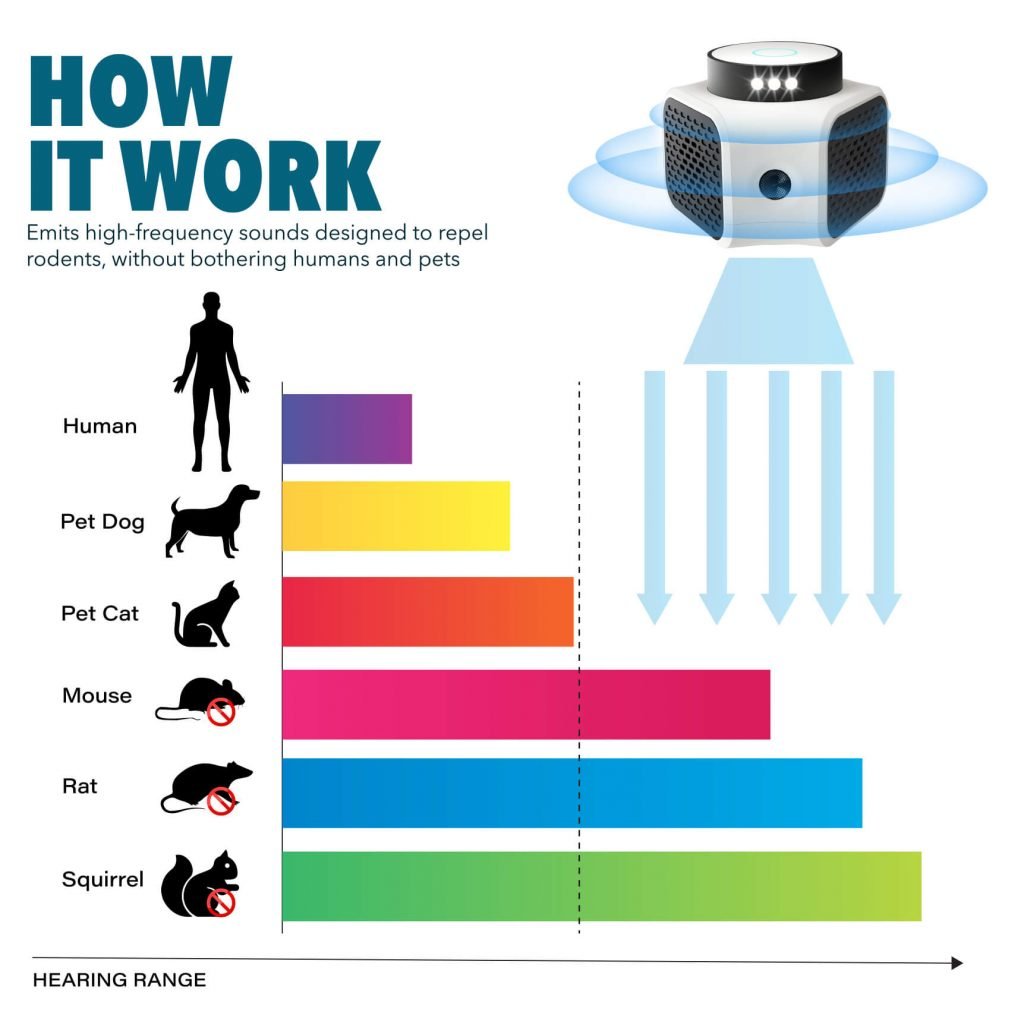Originally published at: What Sound Frequency Repels Rodents? - Thanos Home
Are you fed up with pesky rodents invading your home and garden?
If you’re seeking a non-chemical, humane solution to rodent problems, sound frequency could be your best ally!
Let’s dive into the fascinating world of ultrasonic rodent repellents and discover how sound waves can help you reclaim your space from these unwelcome visitors.
Understanding Ultrasonic Rodent Repellents
What Are Ultrasonic Rodent Repellents?
Ultrasonic rodent repellents are devices designed to emit high-frequency sound waves that are intolerable to rodents like mice and rats but inaudible to humans and most pets.
These gadgets aim to create an uncomfortable environment for rodents, prompting them to leave the area.
How Do They Work?
The key to how ultrasonic rodent repellents function lies in their ability to emit sound waves at specific frequencies that are distressing to rodents.
These frequencies typically range from 20 kHz to 60 kHz.
While humans can only hear sounds up to about 20 kHz, rodents have a much higher hearing range and find these ultrasonic waves highly annoying.

Ideal Frequencies for Repelling Rodents
The Science Behind It
Rodents have sensitive hearing systems designed to pick up high-pitched sounds within the ultrasonic range.
Here’s a quick breakdown of why these frequencies are effective:
- 20 kHz to 30 kHz: Mild discomfort, may deter some rodents over a prolonged period.
- 30 kHz to 50 kHz: Moderate to high discomfort, effectively repels most rodents.
- 50 kHz and above: Extremely uncomfortable, rodents won’t stick around long.
Optimal Frequency Settings
When using ultrasonic rodent repellents, it’s essential to set the right frequencies. Based on studies, setting your device between 22 kHz and 35 kHz yields the best results. These frequencies are particularly effective against common household pests like mice and rats.
Adjustable Frequency Devices
For those dealing with a persistent rodent problem, consider investing in ultrasonic repellents that offer adjustable settings.
Devices with varying or alternating frequencies can prevent rodents from getting used to a single sound, enhancing the overall effectiveness.
Practical Tips for Using Ultrasonic Rodent Repellents
Placement Matters
To get the most out of your ultrasonic repellent, consider the following placement tips:
- Choose Multiple Locations: Place units in several parts of the home where rodent activity is detected.
- Avoid Obstacles: Ultrasonic waves don’t travel well through walls or furniture. Ensure an unobstructed path for the sound waves.
- Elevate the Unit: Position the device a few inches off the ground, as rodents often scurry around low areas.
Combine with Other Methods
While ultrasonic repellents are powerful tools, using them in conjunction with other preventative measures can maximize their effectiveness:
- Seal entry points: Close gaps and cracks in walls, windows, and doors.
- Maintain cleanliness: Regularly clean up food crumbs and store food in sealed containers.
- Use traps: Set up traps to catch any rodents that aren’t deterred by ultrasound.
Limitations and Considerations
Limitations of Ultrasonic Devices
It’s essential to acknowledge that while ultrasonic repellents are effective, they are not a magic bullet:
- No effect on some rodent species: Some rodents may be less sensitive to ultrasonic waves.
- Soundwave interference: Furniture, curtains, and walls can hinder sound wave travel.
- Maintenance: Regularly check devices to ensure they are functioning correctly.
Human and Pet Impact
While ultrasonic devices are safe for humans, some pets, like guinea pigs and hamsters, might also be sensitive to these frequencies.
If you have rodent pets, it’s best to avoid using ultrasonic repellents in their vicinity.
Conclusion
Harnessing the power of ultrasonic sound frequencies can be an effective, humane, and chemical-free way to control rodent problems in your home and garden.
By understanding the ideal frequencies and how to use these devices correctly, you can create a rodent-free environment without resorting to harmful chemicals or lethal traps.
Remember, though, that a multi-faceted approach usually yields the best results.
So, are you ready to give ultrasonic rodent repellents a try?
With the right frequency and proper placement, you’ll be well on your way to a rodent-free home. Happy pest controlling!